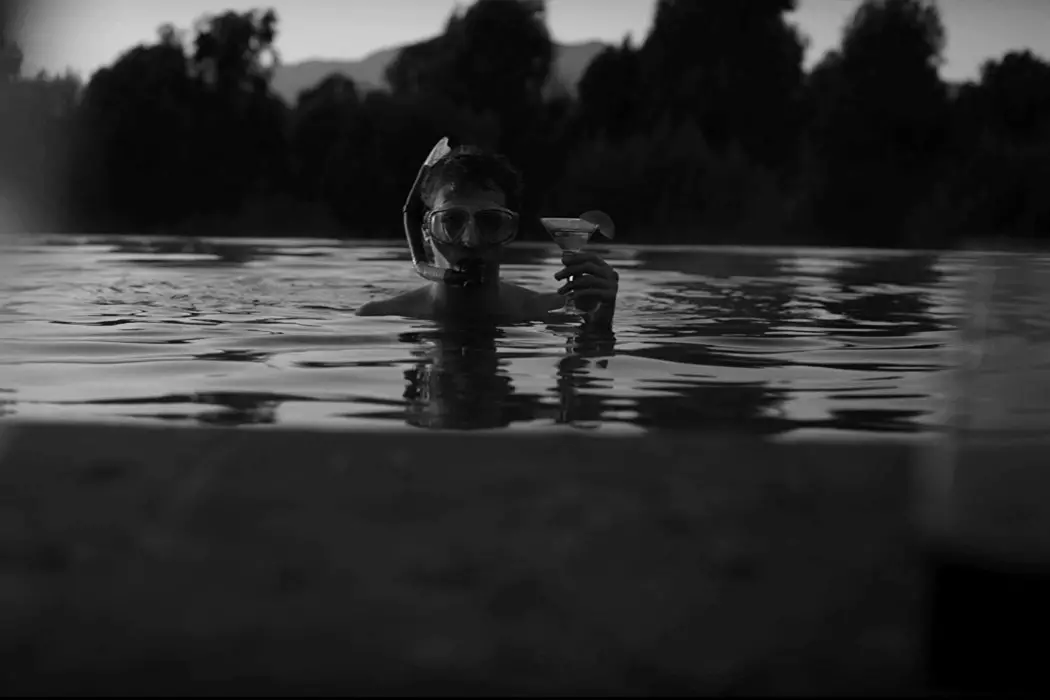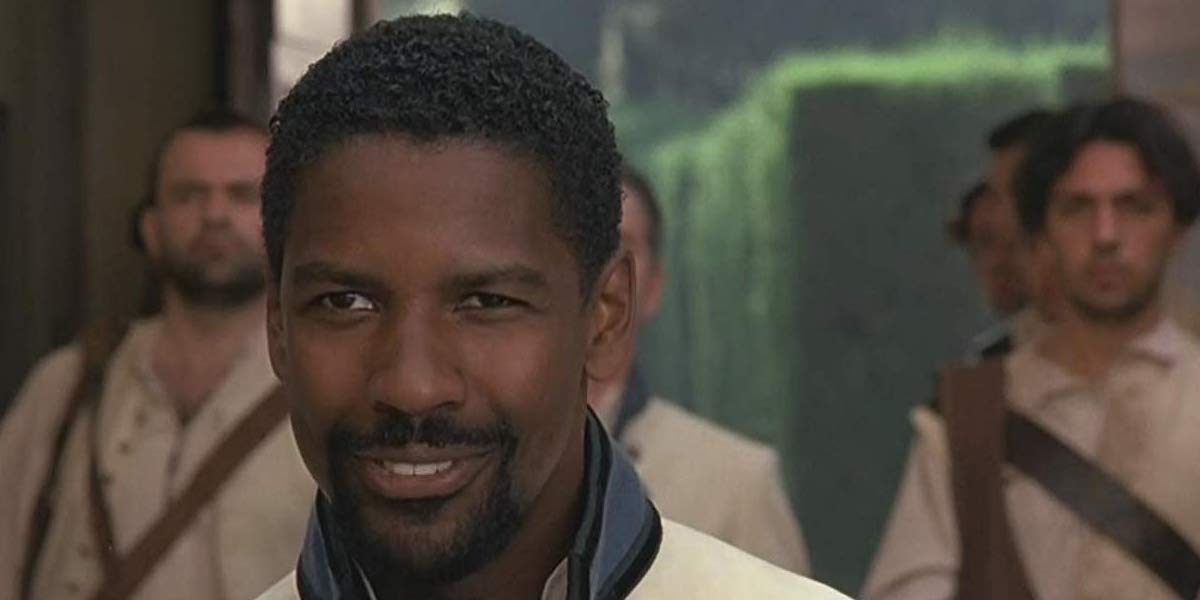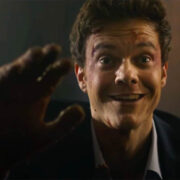MUCH ADO ABOUT NOTHING Twice Over

Frank H. Wu is William L. Prosser Distinguished Professor at…
Much Ado About Nothing, Shakespeare’s convivial story of the sarcastic twosome whose mutual friends all realize should unite as a couple, has had in the past quarter century not one but two film versions worth watching. It is the Bard’s most performed comedy. The Kenneth Branagh and Joss Whedon movies show why.
They could not be more different though each is fast and easy to follow. Separated by a generation, the adaptations of the proto-screwball comedy share the feeling of being a house party for the actors as well as the characters, as if performers had been relaxing, then decided to put on a classic for their own fun. There in fact are kits you can buy for this purpose. Either of these movies could be a primer for those inspired to attempt a do-it-yourself Much Ado.
In 1993, Branagh directed himself with his then-wife Emma Thompson in a version that evokes Old Hollywood as much as it does the Globe Theatre of the Elizabethan era. In 2012, Whedon directed an ensemble in a modern-dress version shot in black and white with a silky sheen that must be the best of digital production values.
Benedick has returned from the wars for R&R of a month. He is led by Prince Don Pedro and accompanied by Claudio. Beatrice is the niece of their host, Leonato. She has a younger relation, Hero, and unlike her cousin who is a man’s equal but not a man’s match Hero is ready to be courted.

The other principal player is Don John, exuding spite, setting himself apart from the merriment, obvious to all but himself the cause of his own sullen mood. He is a bastard, in a social setting when such status was taken as a sign of likely malfeasance. Dogberry appears as the comic relief, his every statement a pompous malapropism of utmost sincerity. He is the defective representative of the common man: called “tedious” by a social superior, he takes the description to be a compliment, further insisting that his being reckoned “an ass” be noted in the record.
The Tuscan Countryside or Los Angeles Sprawl?
In the Branagh version, he cannot be faulted for making himself director and star. A boy from Belfast, he had made it in London, performing this same role live for Dame Judi Dench, before achieving mainstream success directing a Henry V (1989) which emphasized the grit needed to persevere through the grime of military campaigns. Thompson, whom the late critic Stanley Kauffman was smitten with, has the more posh accent, suited to the situation.
Denzel Washington displays a natural confidence as Don Pedro. (Some of the objection to his casting looks, from today, as backlash that stays just shy of bigotry.) Keanu Reeves scowls and sneers as Don John. Michael Keaton has a set of tics here that exceed the extravagance of his spams as Beetlejuice.
In the Whedon version, a cast of character actors were assembled for a shoot during the director’s actual holiday from finishing a superhero blockbuster. At his SoCal home in a dozen days, they frolicked through the production as if their pastime was reciting iambic pentameter. The costume design is incongruous to good effect: the men are in coat and tie, as if the conflict they have put behind them was a corporate takeover. The other affectation is alcohol: everyone is sloshed or hungover, for good stretches.
Whedon renders explicit what Shakespeare left implicit: the primary couple have coupled before, without expectations of permanent damage to their proud solitude. Everyone is highly competent, and all the more credible for not being overexposed. Clark Gregg as uncle Leonato has the vaguely put upon air of a someone who must entertain a few too many visitors for a bit too long. Nathan Fillion as Dogberry has adopted a calm demeanor no less buffoonish than the antic Keaton.

Branagh opened up the urban Much Ado, leading with men on horseback galloping and women picnicking in the cliched terms of a winery advertisement, inviting viewers to tour the Tuscan countryside. Before encountering one another, both men and women bathe naked under the sun in anticipatory celebration of the further festivities to come. Bare butts set the ambiance.
Whedon was comparatively claustrophobic in his residential setting, achieving the effect often sought and rarely achieved, of Shakespeare fully at ease in our era. It’s not likely that many wonder nowadays whether Americans can perform the his work properly. If any had concerns, however, the elocution heard here would pass muster. Everyone has an American — a Californian — accent. But their words come trippingly off the tongue.
Single Life or Married Life?
Every now and then, somebody objects to Shakespeare for his bawdiness. But in the main, people accept his iconic status, essentially defining the Western canon, and gloss over the perverse bits. The Much Ado title, for example, would be deemed obscene if it were explained explicitly. Men have a “thing,” so women have “nothing.” Thus the reference is to the fuss over female privates. It also is a homonym for eavesdropping, pronounced as we would say “noting.”
Much Ado is meant to be much more equal in gender terms if not quite meeting contemporary standards of progressive politics. Taming of the Shrew is difficult to stage in a straightforward manner, because it depicts the submission of a woman in an abusive marriage, and, before that, her treatment as property by her father and means to an end by various suitors, not to mention the behavior that earns her the sobriquet but probably would be admired as appropriate aggressiveness in a male guise. Two Gentlemen of Verona is even worse, since it has an attempted rape which is treated as a joke, bringing matters to a discomforting conclusion. Measure for Measure is a “problem” play for what would be recognized as sexual harassment now but was normal then.
Since Beatrice, “lady disdain,” is sharper than Benedick in the sense of more antagonistic and more clever, Much Ado does not need to be revised with irony. It can be enjoyed without qualms. Their friends contriving to set up Beatrice and Benedick continues to provoke laughs.

For that matter, the collective insistence on the virginity of the maiden Hero is matched by the inexperience of Claudio. He cannot help seeming dim and feckless. He is incapable of wooing in his own name. His elders must make the match.
Even Much Ado, however, is comedy alloyed with drama. The younger couple, gulled by Don Pedro’s brother, Don John, have a most public break up. Claudio believes Hero has cuckolded him before marriage, before his very eyes, and his shaming of her at their wedding ceremony leads to her collapse, then the announcement of her death. It is humiliation difficult to watch.
Beatrice commands Benedick to kill his friend Claudio forthwith. Her delivery of the directive confirms that her confident wit is not deployed merely in fooling around.
There is an eventual reconciliation of all concerned. Yet enough doubt lasts until the conclusion for a viewer unaware of the twin plots to be anxious though. The tonal changes are balanced well, by Branagh and Whedon alike.
Branagh or Whedon?
The Branagh and Whedon versions are worth comparing to demonstrate the futility of comparison. In each, the illusion that is presented is perfect, because to wake from the dream of the story is to wake into another dream layer of the audience being allowed to witness the actors performing for their own sake. The expression of surprise that Whedon, of Buffy the Vampire Slayer and Avengers prestige, would helm a classic gives away the prejudices of those who underestimate pop culture. Branagh also is no stranger to the universe of the superhero, having been in charge of the first Thor.
Branagh’s athletic romp is more democratic in the earthiness of his costumes and setting. Whedon’s contemporary vibe might doom his presentation to becoming more dated very soon. Both cut a line uttered by Benedick that is anti-Semitic (about being selfish like a Jew), but Whedon keeps an aside by Claudio that reveals him to be racist (about being willing to marry even an Ethiope).
But these two movies are each unique, sui generis. Branagh and Whedon exhibit as well the importance of the director. None would doubt the authority of Shakespeare as the author — not an author, but the author who gave us our modern sense of individual identity. But Branagh and Whedon have sure hands. They transform the same script into distinctive visions. Although there is no objective means of assessing which is better than the other, there is the pleasure of contemplating the cinematic achievement, to revel in what can be done to entertain that also can educate, in that dialogue among the audience that extends the tradition of the theatre.
Much Ado invites us to join the merry-making. As Benedick declares, “the world must be peopled.”
Which Much Ado Is Better? Is it possible to compare?
The Kenneth Branagh version of Much Ado was released July 2, 1993. The Joss Whedon version was released October 4, 2013.
Does content like this matter to you?
Become a Member and support film journalism. Unlock access to all of Film Inquiry`s great articles. Join a community of like-minded readers who are passionate about cinema - get access to our private members Network, give back to independent filmmakers, and more.
Frank H. Wu is William L. Prosser Distinguished Professor at University of California Hastings College of the Law, where he has taught on film and law; he previously served as Chancellor & Dean at the institution. He has been published everywhere from the New York Times and Washington Post to the Chronicle of Higher Education and National Law Journal to Huffington Post, and he writes regularly about photography for 35mmc. He is a fan especially of 1970s paranoid thrillers.











